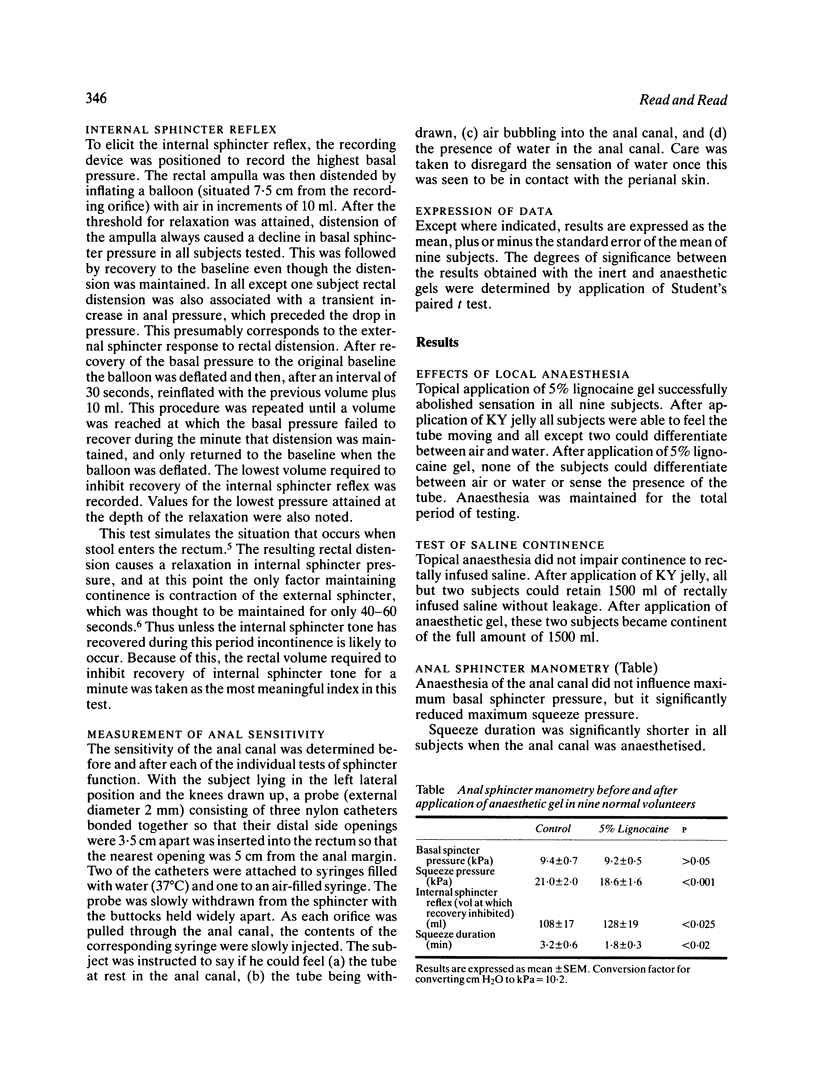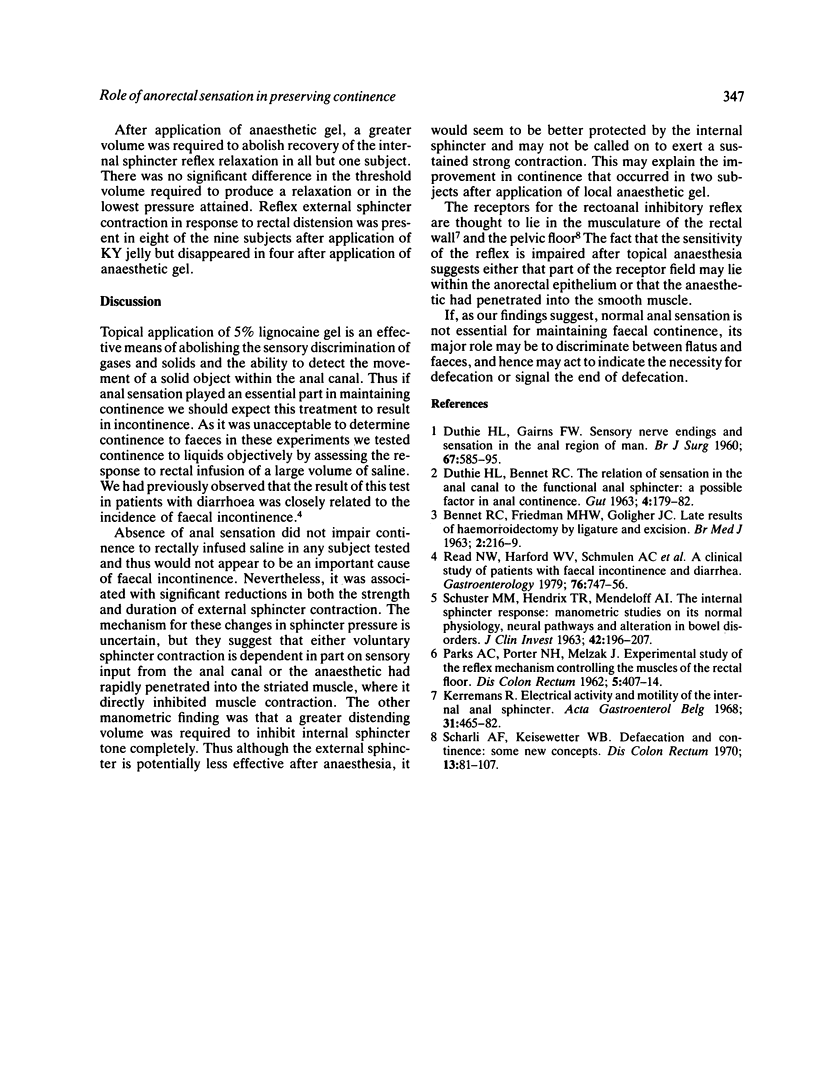Abstract
The role of anal sensation in preserving continence was studied in nine healthy volunteers. Objective assessment of sphincter function by manometry and rectal saline infusion was carried out during topical anaesthesia of the anal canal using 5% lignocaine gel and during lubrication with the same amount of inert gel. Anaesthesia successfully abolished anal sensation and reduced both the amplitude and duration of the voluntary squeeze. Basal pressure was unaffected, but the rectal volume required to produce a sustained internal sphincter relaxation was increased. Saline continence was not impaired. Indeed, two subjects, who were previously unable to retain the full 1500 ml of rectally infused saline, did so when the anal canal was anaesthetised. Our findings suggest that anal sensation is not a critical factor in preserving continence. This implies that the incontinence experienced after anorectal surgery or neuropathy cannot be explained by lack of anal sensation alone.
Full text
PDF


Selected References
These references are in PubMed. This may not be the complete list of references from this article.
- BENNETT R. C., FRIEDMAN M. H., GOLIGHER J. C. Late results of haemorrhoidectomy by ligature and excision. Br Med J. 1963 Jul 27;2(5351):216–219. doi: 10.1136/bmj.2.5351.216. [DOI] [PMC free article] [PubMed] [Google Scholar]
- DUTHIE H. L., GAIRNS F. W. Sensory nerve-endings and sensation in the anal region of man. Br J Surg. 1960 May;47:585–595. doi: 10.1002/bjs.18004720602. [DOI] [PubMed] [Google Scholar]
- Duthie H. L., Bennett R. C. The relation of sensation in the anal canal to the functional anal sphincter: a possible factor in anal continence. Gut. 1963 Jun;4(2):179–182. doi: 10.1136/gut.4.2.179. [DOI] [PMC free article] [PubMed] [Google Scholar]
- Kerremans R. Electrical activity and motility of the internal anal sphincter: an "in vivo" electrophysiological study in man. Acta Gastroenterol Belg. 1968 Jul;31(7):465–482. [PubMed] [Google Scholar]
- PARKS A. G., PORTER N. H., MELZAK J. Experimental study of the reflex mechanism controlling the muscle of the pelvic floor. Dis Colon Rectum. 1962 Nov-Dec;5:407–414. doi: 10.1007/BF02616644. [DOI] [PubMed] [Google Scholar]
- Read N. W., Harford W. V., Schmulen A. C., Read M. G., Santa Ana C., Fordtran J. S. A clinical study of patients with fecal incontinence and diarrhea. Gastroenterology. 1979 Apr;76(4):747–756. [PubMed] [Google Scholar]
- SCHUSTER M. M., HENDRIX T. R., MENDELOFF A. I. The internal anal sphincter response: manometric studies on its normal physiology, neural pathways, and alteration in bowel disorders. J Clin Invest. 1963 Feb;42:196–207. doi: 10.1172/JCI104706. [DOI] [PMC free article] [PubMed] [Google Scholar]
- Scharli A. F., Kiesewetter W. B. Defecation and continence: some new concepts. Dis Colon Rectum. 1970 Mar-Apr;13(2):81–107. doi: 10.1007/BF02617635. [DOI] [PubMed] [Google Scholar]


